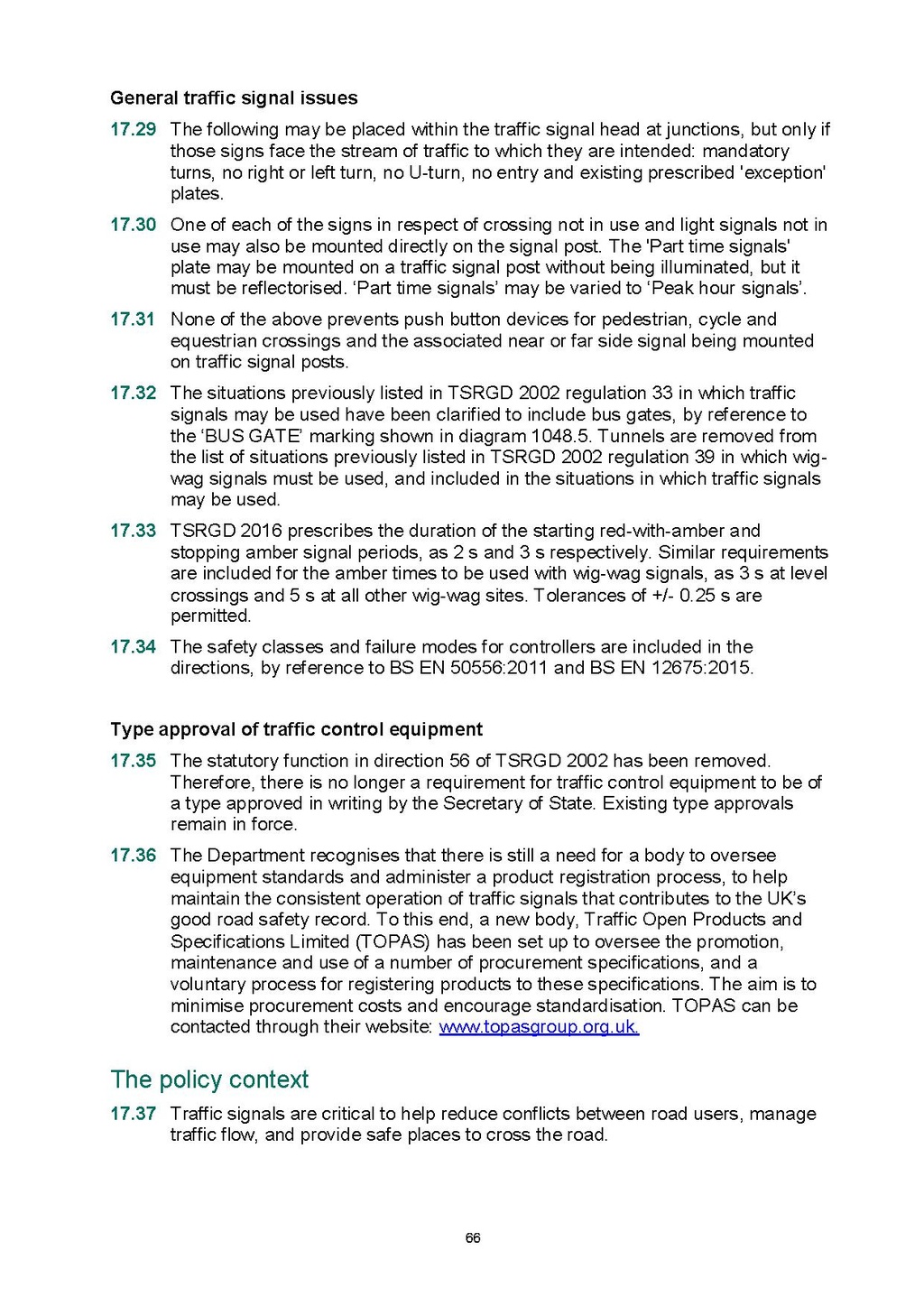General traffic signal issues
17.29
The following may be placed within the traffic signal head at junctions, but only if those signs face the stream of traffic to which they are intended: mandatory turns, no right or left turn, no U-turn, no entry and existing prescribed 'exception' plates.
17.30
One of each of the signs in respect of crossing not in use and light signals not in use may also be mounted directly on the signal post. The 'Part time signals' plate may be mounted on a traffic signal post without being illuminated, but it must be reflectorised. 'Part time signals' may be varied to 'Peak hour signals'.
17.31
None of the above prevents push button devices for pedestrian, cycle and equestrian crossings and the associated near or far side signal being mounted on traffic signal posts.
17.32
The situations previously listed in TSRGD 2002 regulation 33 in which traffic signals may be used have been clarified to include bus gates, by reference to the 'BUS GATE' marking shown in diagram 1048.5. Tunnels are removed from the list of situations previously listed in TSRGD 2002 regulation 39 in which wigwag signals must be used, and included in the situations in which traffic signals may be used.
17.33
TSRGD 2016 prescribes the duration of the starting red-with-amber and stopping amber signal periods, as 2 s and 3 s respectively. Similar requirements are included for the amber times to be used with wig-wag signals, as 3 s at level crossings and 5 s at all other wig-wag sites. Tolerances of +/- 0.25 s are permitted.
17.34
The safety classes and failure modes for controllers are included in the directions, by reference to BS EN 50556:2011 and BS EN 12675:2015.
Type approval of traffic control equipment
17.35
The statutory function in direction 56 of TSRGD 2002 has been removed. Therefore, there is no longer a requirement for traffic control equipment to be of a type approved in writing by the Secretary of State. Existing type approvals remain in force.
17.36
The Department recognises that there is still a need for a body to oversee equipment standards and administer a product registration process, to help maintain the consistent operation of traffic signals that contributes to the UK's good road safety record. To this end, a new body, Traffic Open Products and Specifications Limited (TOPAS) has been set up to oversee the promotion, maintenance and use of a number of procurement specifications, and a voluntary process for registering products to these specifications. The aim is to minimise procurement costs and encourage standardisation. TOPAS can be contacted through their website: www.topasgroup.org.uk.
The policy context
17.37
Traffic signals are critical to help reduce conflicts between road users, manage traffic flow, and provide safe places to cross the road.
66
